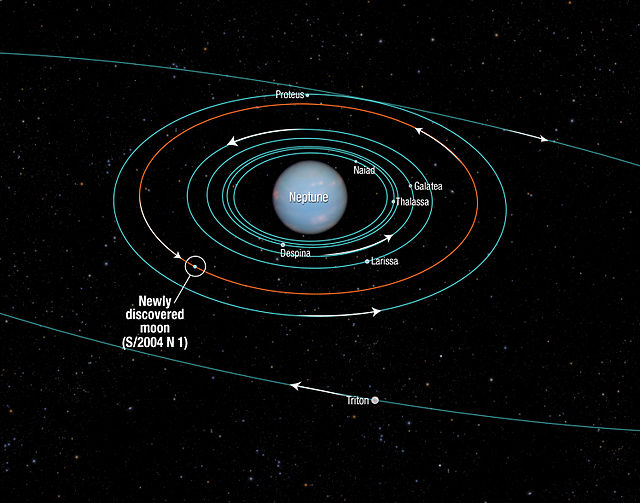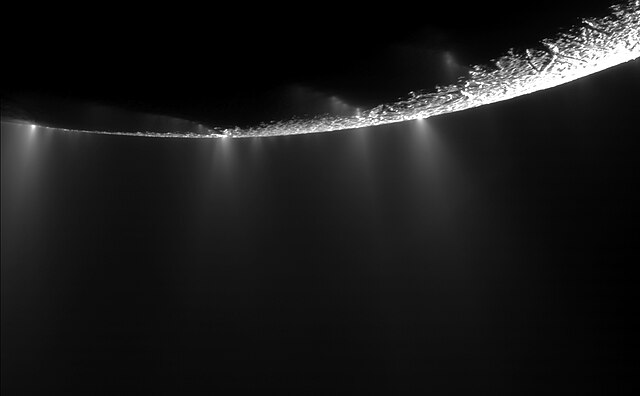In astronomy, an inner moon or inner natural satellite is a natural satellite following a prograde, low-inclination orbit inwards of the large satellites of the parent planet. They are generally thought to have been formed in situ at the same time as the coalescence of the original planet. Neptune's moons are an exception, as they are likely reaggregates of the pieces of the original bodies, which were disrupted after the capture of the large moon Triton. Inner satellites are distinguished from other regular satellites by their proximity to the parent planet, their short orbital periods, their low mass, small size, and irregular shapes.
Jupiter's inner moons and rings
Diagram of Neptune's inner satellites.
In astronomy, a regular moon or a regular satellite is a natural satellite following a relatively close, stable, and circular orbit which is generally aligned to its primary's equator. They form within discs of debris and gas that once surrounded their primary, usually the aftermath of a large collision or leftover material accumulated from the protoplanetary disc. Young regular moons then begin to accumulate material within the circumplanetary disc in a process similar to planetary accretion, as opposed to irregular moons, which formed independently before being captured into orbit around the primary.
Active plumes on the south pole of Saturn's moon Enceladus, fed by a global subsurface ocean of liquid water



